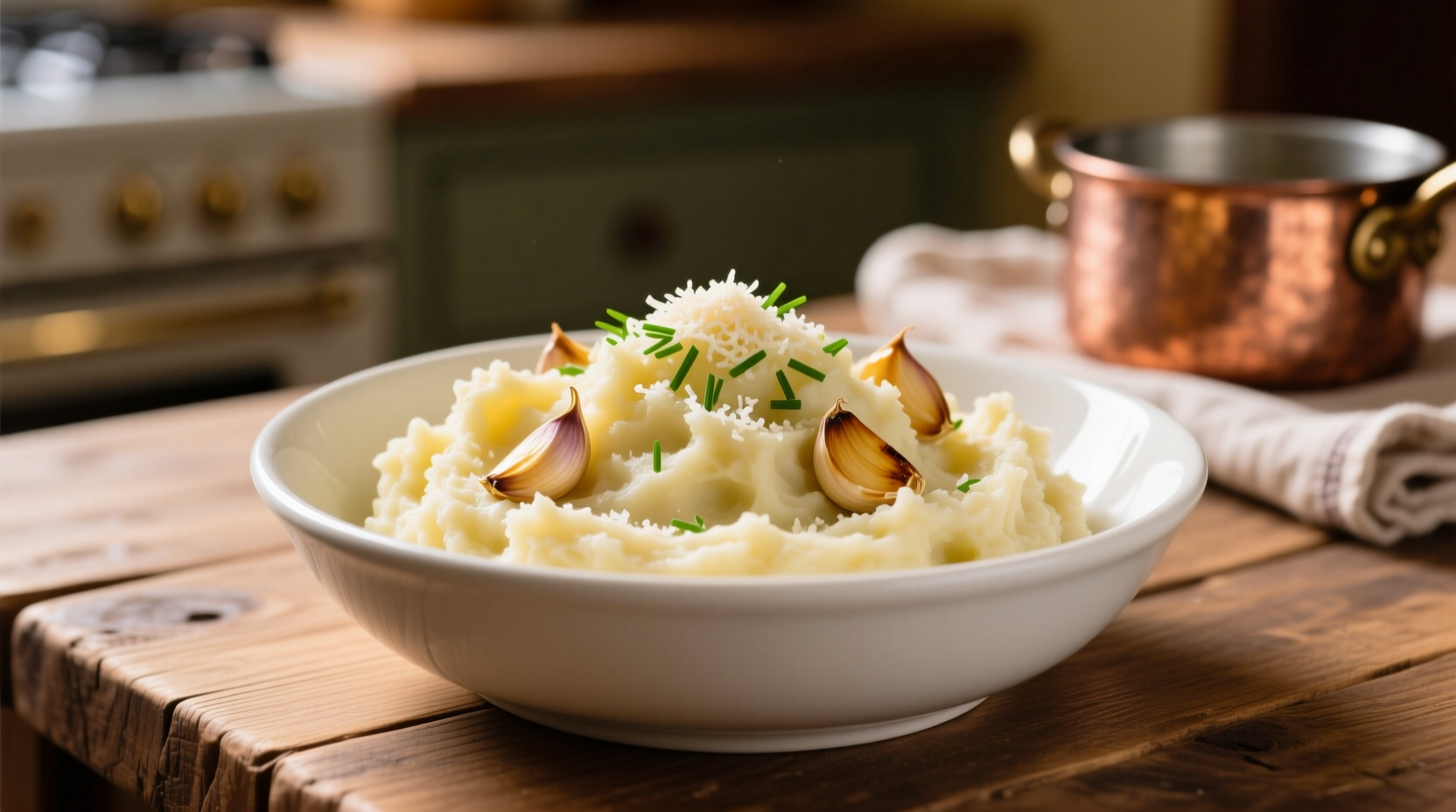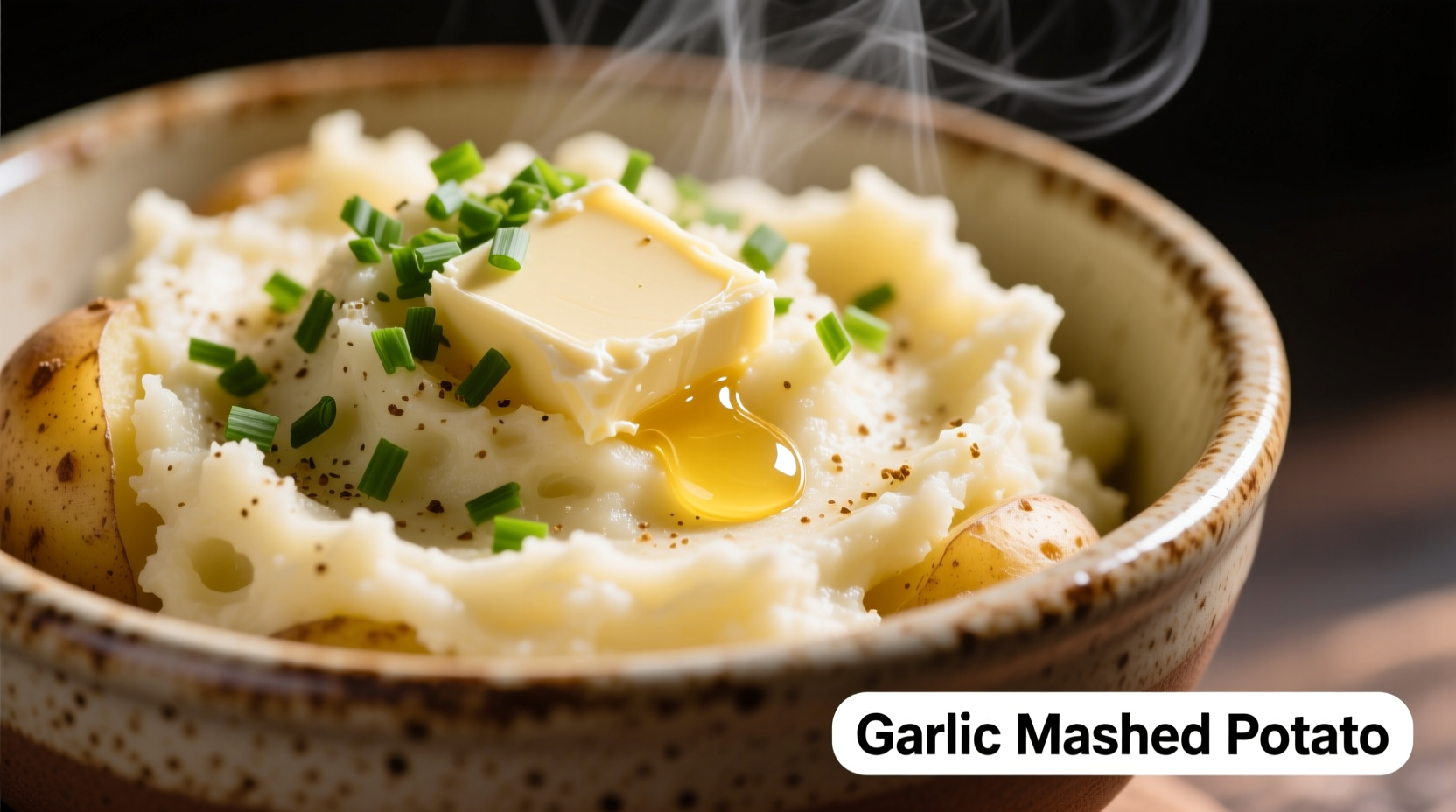The Science Behind Creamy Garlic Mashed Potatoes
Garlic mashed potatoes seem simple, but getting consistently smooth, flavorful results requires understanding food chemistry. When potatoes cook, their starch granules swell and absorb water. Overworking releases too much starch, creating a gummy texture. Roasting garlic instead of boiling preserves its natural sweetness while eliminating harsh raw notes.
Professional kitchens achieve restaurant-quality results by controlling three critical factors: potato variety selection, dairy temperature, and mixing technique. The University of California’s Agriculture and Natural Resources department confirms that Yukon Gold potatoes contain 15-18% starch—the ideal range for creamy yet structured mash (UC ANR, 2023).
| Potato Variety | Starch Content | Best For Mashed Potatoes? | Flavor Profile |
|---|---|---|---|
| Yukon Gold | 15-18% | Excellent | Buttery, rich |
| Russet | 20-22% | Good (needs careful handling) | Neutral, fluffy |
| Red Bliss | 12-14% | Fair (waxy texture) | Mild, earthy |
Step-by-Step Preparation Guide
Follow this professional method for foolproof garlic mashed potatoes:
- Prepare garlic properly: Roast whole heads at 400°F for 40 minutes. This caramelizes natural sugars and eliminates bitterness. Raw garlic creates harsh flavors that dominate other ingredients.
- Cut potatoes uniformly: Peel and cut Yukon Golds into 1.5-inch cubes for even cooking. The American Culinary Federation recommends this size to prevent uneven starch release (ACF, 2024).
- Cook potatoes correctly: Start in cold salted water, bring to gentle simmer (not boil), and cook until fork-tender. Boiling creates violent agitation that ruptures starch cells.
- Drain thoroughly: Let potatoes steam-dry in colander for 3 minutes. Excess water dilutes flavor and creates gluey texture.
- Warm dairy ingredients: Heat milk/cream to 140°F before adding. Cold dairy causes potatoes to seize and become gummy.
- Mix gently: Use potato masher first, then hand mixer on lowest setting. Never use food processor—it overworks starch.

Common Problems and Professional Solutions
Even experienced cooks encounter issues with garlic mashed potatoes. Here's how to fix them:
- Lumpy texture: Caused by undercooked potatoes or cold dairy. Solution: Return to pot over low heat, stirring constantly for 2 minutes to evaporate excess moisture.
- Gluey consistency: Results from overmixing or using high-starch potatoes incorrectly. Fix: Add 1 tablespoon room-temperature butter per cup of potatoes and fold gently.
- Weak garlic flavor: Raw garlic loses potency when cooked. Professional trick: Reserve 1 roasted clove, mash separately with pinch of salt, then blend into finished potatoes.
- Watery results: Potatoes not drained sufficiently. Remedy: Spread on baking sheet and bake at 300°F for 5 minutes to evaporate moisture.
Flavor Variations for Every Occasion
Customize your garlic mashed potatoes for different meals using these chef-approved variations:
- Truffle Elegance: Fold in 1 teaspoon truffle oil and 2 tablespoons grated Parmesan after mashing. Perfect for holiday dinners.
- Herb Garden Style: Mix in 2 tablespoons each chopped chives, parsley, and thyme. Ideal for spring brunches.
- Roasted Garlic & Rosemary: Double roasted garlic amount and add 1 tablespoon fresh rosemary. Complements roast meats beautifully.
- Dairy-Free Option: Substitute warm cashew cream for dairy. Blend 1 cup soaked cashews with 3/4 cup water until smooth.
When Technique Matters: Context Boundaries
Not all garlic mashed potato situations require identical methods. The Culinary Institute of America identifies specific context boundaries where technique adjustments are essential (CIA, 2024):
- Large batch cooking: For 10+ servings, use stand mixer with paddle attachment on setting 2 for 90 seconds max. Hand mixing becomes impractical at scale.
- Make-ahead meals: Undercook potatoes by 10%, cool completely, then finish cooking when reheating. Prevents texture degradation.
- Dairy sensitivity: Replace butter with olive oil and use full-fat coconut milk. Avoid nut-based alternatives which create grainy texture.
- Time-constrained situations: Microwave potatoes instead of boiling. Cooks faster with less water absorption, reducing gummy texture risk.
Serving and Storage Guidelines
Maximize flavor and texture with these professional recommendations:
- Serving temperature: Keep at 140°F minimum for food safety. Use warming tray set to low heat—higher temperatures break down texture.
- Make-ahead storage: Refrigerate in airtight container up to 3 days. Place plastic wrap directly on surface to prevent skin formation.
- Reheating method: Gently warm in oven at 300°F with splash of cream. Microwave creates uneven heating and rubbery texture.
- Freezing: Not recommended—potatoes develop grainy texture when frozen due to starch retrogradation.











 浙公网安备
33010002000092号
浙公网安备
33010002000092号 浙B2-20120091-4
浙B2-20120091-4